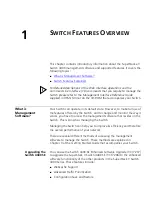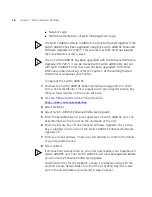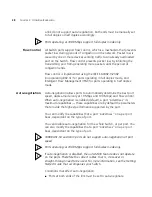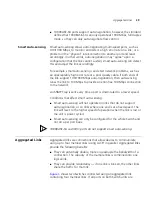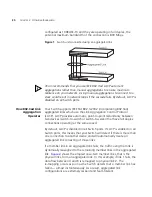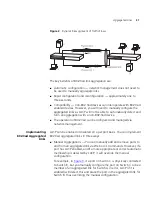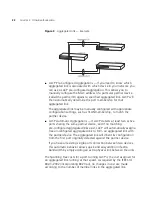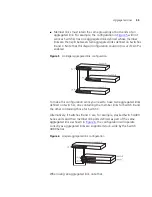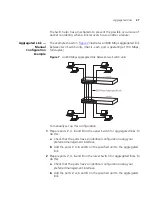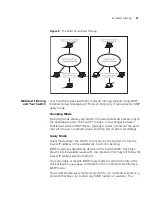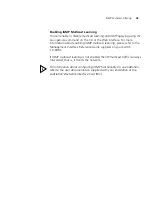
28
C
HAPTER
2: O
PTIMIZING
B
ANDWIDTH
a link do not support auto-negotiation, both ends must be manually set
to full duplex or half duplex accordingly.
Ports operating at 1000 Mbps support full duplex mode only.
Flow Control
All Switch ports support flow control, which is a mechanism that prevents
packet loss during periods of congestion on the network. Packet loss is
caused by one or more devices sending traffic to an already overloaded
port on the Switch. Flow control prevents packet loss by inhibiting the
transmitting port from generating more packets until the period of
congestion ends.
Flow control is implemented using the IEEE Std 802.3-2002
(incorporating 802.3x) for ports operating in full duplex mode, and
Intelligent Flow Management (IFM) for ports operating in half duplex
mode.
Auto-negotiation
Auto-negotiation allows ports to automatically determine the best port
speed, duplex-mode (only at 10 Mbps and 100 Mbps) and flow control.
When auto-negotiation is enabled (default), a port “advertises” its
maximum capabilities — these capabilities are by default the parameters
that provide the highest performance supported by the port.
You can modify the capabilities that a port “advertises” on a per port
basis, dependant on the type of port.
You can disable auto-negotiation for the whole Switch, or per port. You
can also modify the capabilities that a port “advertises” on a per port
basis, dependant on the type of port.
1000BASE-SX and GBIC ports do not support auto-negotiation of port
speed.
Ports operating at 1000 Mbps support full duplex mode only.
If auto-negotiation is disabled, the auto-MDIX feature does not operate
on the ports. Therefore the correct cables, that is, cross-over or
straight-through need to be used. For more information, see the Getting
Started Guide that accompanies your Switch.
Conditions that affect auto-negotiation:
■
Ports at both ends of the link must be set to auto-negotiate.
Summary of Contents for 3C17205-US - Corp SUPERSTACK 3 SWITCH 4400...
Page 8: ...GLOSSARY INDEX...
Page 14: ...14...
Page 26: ...26 CHAPTER 1 SWITCH FEATURES OVERVIEW...
Page 44: ...44 CHAPTER 3 USING MULTICAST FILTERING...
Page 55: ...How STP Works 55 Figure 13 STP configurations...
Page 58: ...58 CHAPTER 4 USING RESILIENCE FEATURES...
Page 84: ...84 CHAPTER 7 STATUS MONITORING AND STATISTICS...
Page 92: ...92 CHAPTER 8 SETTING UP VIRTUAL LANS...
Page 98: ...98 CHAPTER 9 USING WEBCACHE SUPPORT...
Page 120: ...120 CHAPTER 12 POWER MANAGEMENT AND CONTROL...
Page 122: ...122...
Page 126: ...126 APPENDIX A CONFIGURATION RULES...
Page 134: ...134 APPENDIX B NETWORK CONFIGURATION EXAMPLES...
Page 150: ...150 GLOSSARY...


